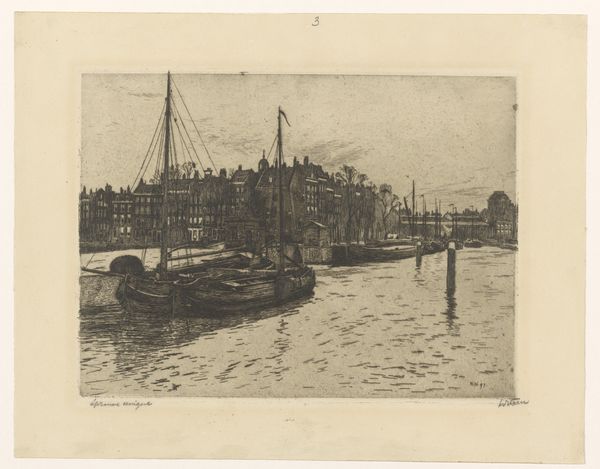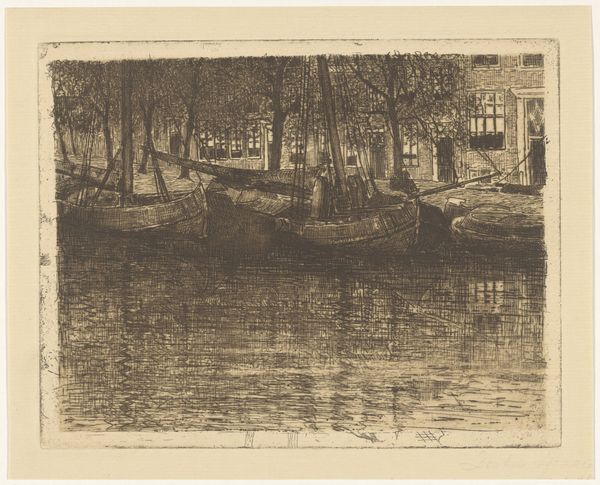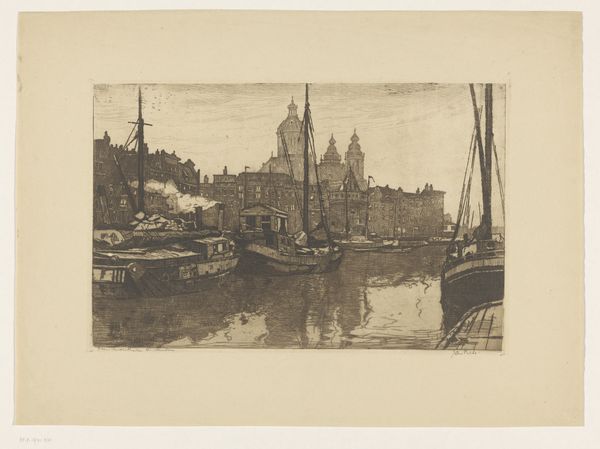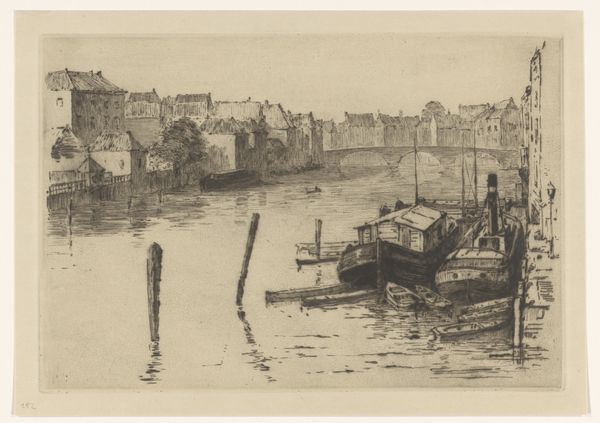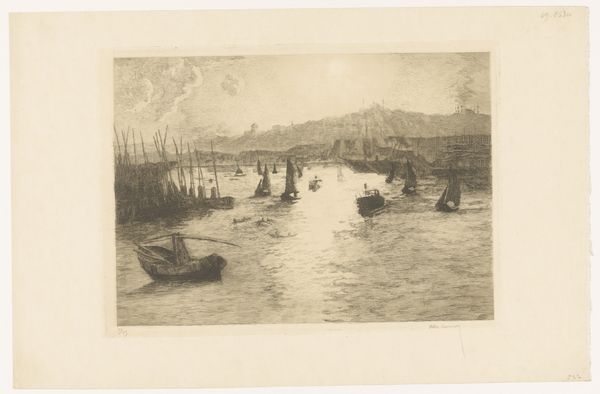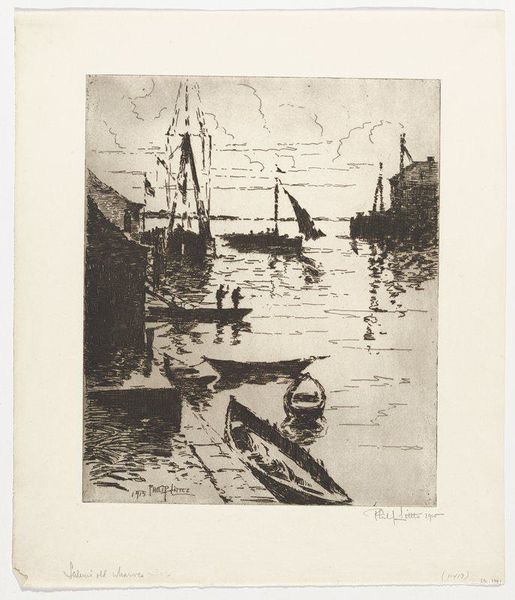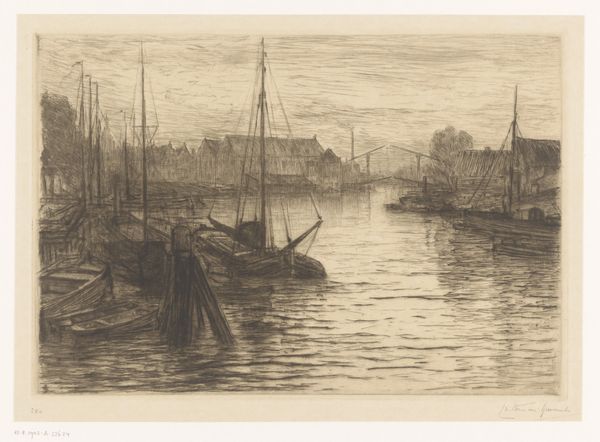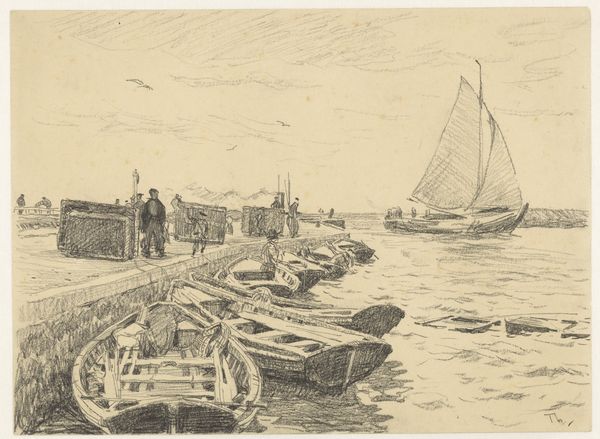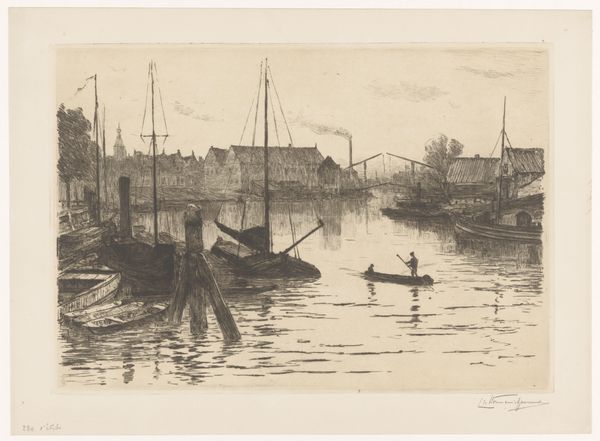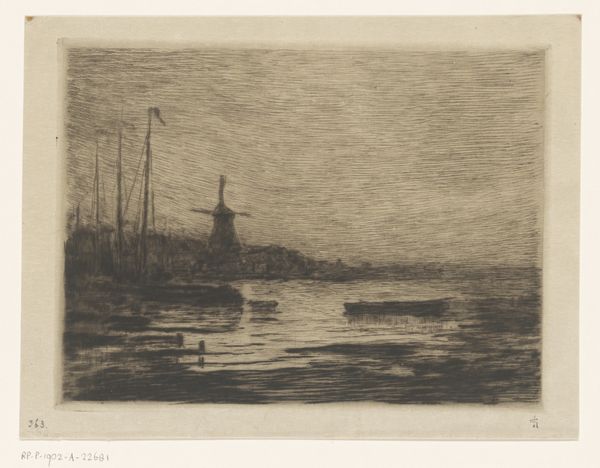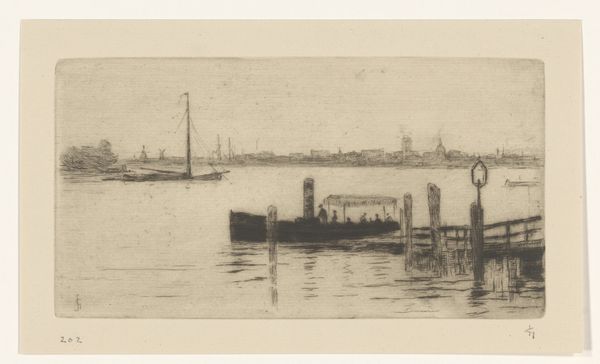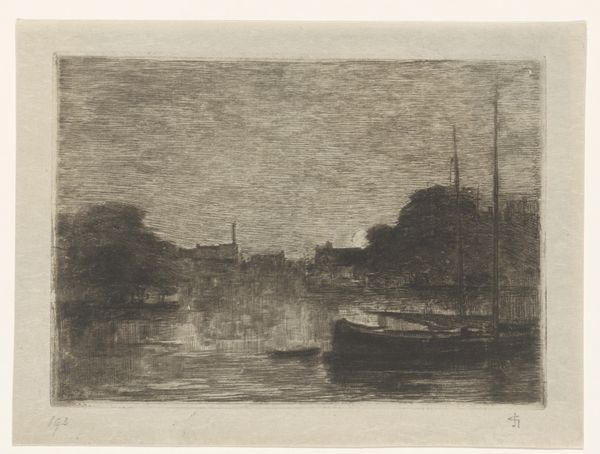
print, etching
#
aged paper
#
dutch-golden-age
# print
#
etching
#
landscape
#
cityscape
#
realism
Dimensions: height 237 mm, width 319 mm
Copyright: Rijks Museum: Open Domain
Curator: Let’s turn our attention to Willem Witsen’s etching, “Gezicht op de Leuvehaven in Rotterdam,” likely created between 1897 and 1906. Editor: Wow, there’s something so quiet and almost… blurry about this. It feels like looking at Rotterdam through a rainy window, you know? That soft gray light, and those sturdy boats. It’s simple but really draws you in. Curator: It does, doesn’t it? Witsen, steeped in the tradition of Dutch realism, offers us not just a depiction of a cityscape, but a meditation on it. What’s fascinating to consider is the relationship between the built environment, represented here with aged paper, and the individual figure, which, by extension, implicates the impact on the socio-political contexts of the moment. Editor: Right. You see that little rowboat, with a person in it? They seem so tiny compared to everything else. And all those details kind of blur into this hazy impression, especially if we relate it to other Witsen's artwork produced around the same period. The person sort of becomes part of this watery world. Curator: Exactly. By employing the etching technique, he gives form to that world while at the same time subtly underlining the tensions between industrial expansion and the preservation of social space. This work speaks, perhaps implicitly, to a larger historical moment wherein port cities undergo significant change that invariably alters community relationships. Editor: Okay, so what you're saying is, beyond just being a pretty picture, Witsen might be hinting at a struggle between progress and tradition? And also pointing towards the possible marginalization of a specific portion of society? Curator: Precisely! And consider, too, that in order to experience that struggle, you might also ask to what extent might social structures have impacted access to that waterfront or access to those waterways. It raises important questions around class and public space at that particular moment. Editor: All that from a blurry boat and a gray day! I love how something that seems so simple can hold so much depth if you look closer. The etching is gorgeous by itself, but adding that social element just changes how you perceive the artwork entirely. Curator: It reminds us of art’s power not merely to reflect but also to instigate vital discourse. Editor: Agreed. I’m not sure I'll see any cityscape quite the same way now.
Comments
No comments
Be the first to comment and join the conversation on the ultimate creative platform.
